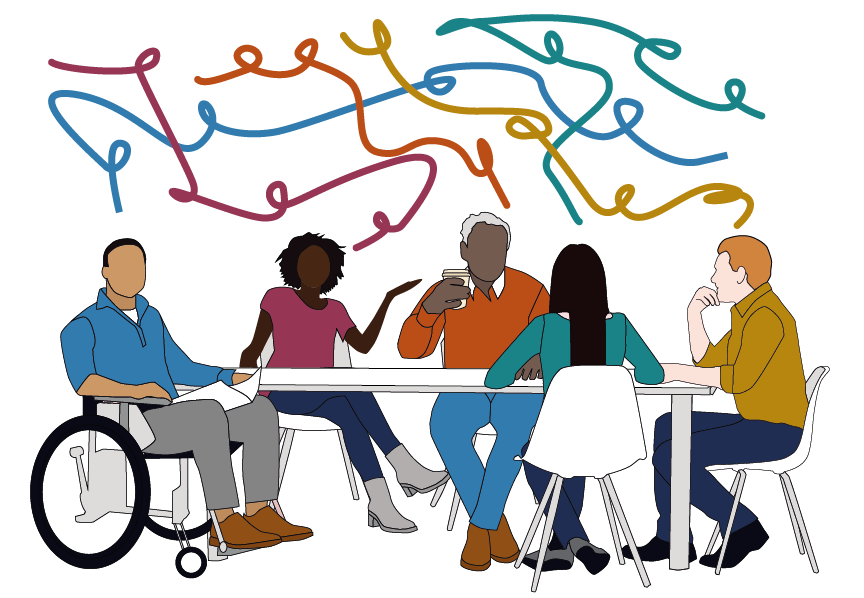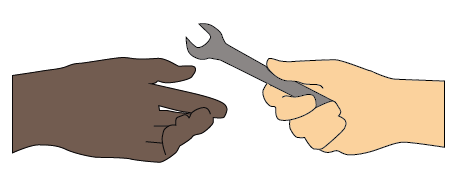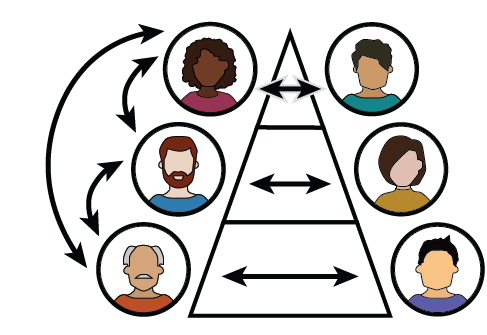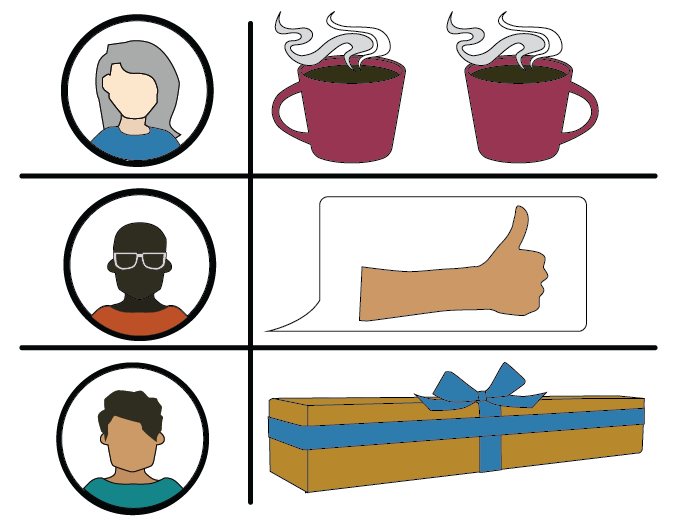Why
Because we are all different, researchers have identified five different ways of communicating to adapt to each other's preferences.
Everyone receives and gives appreciation in different ways, and knowing our colleagues' preferences can greatly increase the effectiveness of acts of appreciation.
The goal is to empower leaders and employees in communicating appreciation at work.

Five different types of languages of appreciation
| Language | Description | Examples |
|---|---|---|
Words of Affirmation

|
Affirming others using written or spoken words. |
|
Acts of Service

|
Pitching in to help and get things done. |
|
Quality Time

|
Giving someone undivided personal attention. |
|
Tangible Gifts

|
Offering thoughtful, non-monetary gifts to a recipient. Best if personalized. |
Giving items like:
|
Physical
Touch

|
High fives and fist bumps are sometimes used for celebratory moments. |
Giving a:
|
Is there a difference between recognition and appreciation?
Yes! Although these two terms are similar, there is a difference between them.
Recognition is about giving praise based on successful results or performance.
Appreciation is about valuing someone beyond its accomplishments and even failures, it's more a testament to their character.
Benefits
Receiving appreciation for our efforts helps to:
- build trust within teams;
- strengthen relationships; and
- improve self-esteem.
Research shows that feeling appreciated leads to better health, lower stress, and fewer sick days.
Giving appreciation helps to:- provide continuous feedback to a well-deserving team.
- increase productivity to motivate employees.

How do I identify my own/my colleague's language of appreciation?
Please complete the languages of appreciation quiz to learn your preferred language of appreciation in the workplace and reflect on the different language of appreciation your colleagues may prefer.
Who?
Appreciation can be expressed to anyone, regardless of level, position or tenure!

What's next?
Take it to the next level with your teammates!
Download, complete and share with your team the favourite language of appreciation group profile template, so everyone can tailor their tokens of gratitude.


